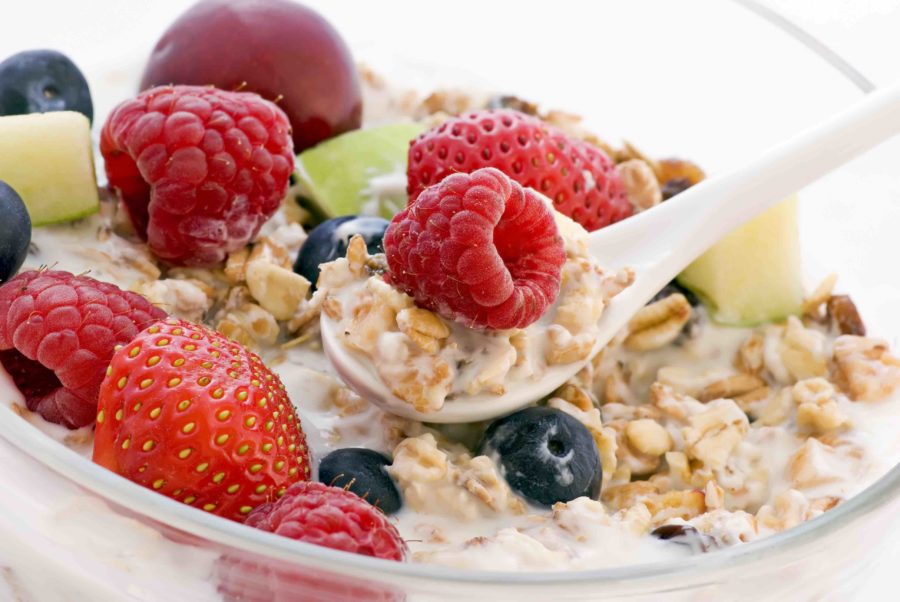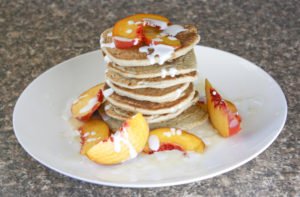When people find out that I have successfully reversed my autoimmune disease, many people like to ask, so what did you eat? There’s a lot of conflicting information out there, and sometimes it can be overwhelming especially if you’re a busy person. Therefore, I thought a lot of people would appreciate knowing what a normal day of eating looks like on an autoimmune reversal diet for someone who’s busy like my wife and I are.
Eating the Right Meals Is a Big Challenge
Many who are attempting to heal their autoimmune disease at home find that knowing what the right foods are to eat is their biggest challenge. The reason is because an autoimmune reversal diet is not a fast food or take out diet. Meaning it takes time and you’re going to have to prepare most of your food yourself at home. The reason for this is because the majority of restaurants and delis are serving food that will perpetuate your autoimmunity because they are full of GMOs, chemicals and animal-based foods. If you want to see why animal-based foods perpetuate autoimmunity click here. Therefore, you can’t depend on eating out. You have to take matters into your own hands and know for yourself exactly what is in the food you’re eating.
Give and Take
There’s give and take with most things in life, and if you’re going to have the benefits of eating a diet that is actually healing your autoimmunity, the give is that you won’t be able to accomplish this by eating out every day. But there’s good news! Whether it’s a slow-paced day, or a very busy day you can eat delicious food that’s safe and will actually contribute to healing your autoimmunity.
The 3 Keys
So how can a busy person possibly accommodate preparing all of their meals themselves at home? Let me show you. There are three keys to pulling this off. These keys are planning, batching and using technology to do work for you.
First, here’s a list of our typical busy-day meal plan. After that I’ll explain how we do it.
Pre-Breakfast
One quart (4 cups) of warm water first thing in the morning. Sometimes with the juice of half a lemon.
1/2” aloe vera 15 minutes later.
Breakfast
- Hot breakfast cereal with nuts, coconut milk and fruit
- Oven-baked roasted potatoes and sweet potatoes served with sliced avocado
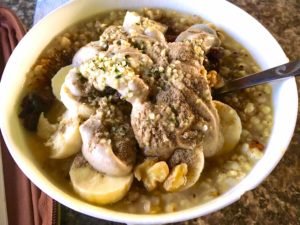
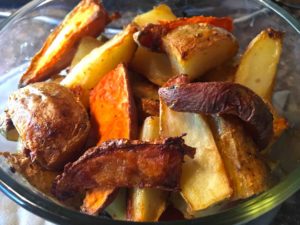
Lunch
- Salad with steamed beets, vegan Parmesan crumble, lemon and salt
- Pizza
- Enchiladas
- Mac & cheese
- Pot pie
- Veggie bowls: which includes beans, rice, avocado and organic corn tortilla
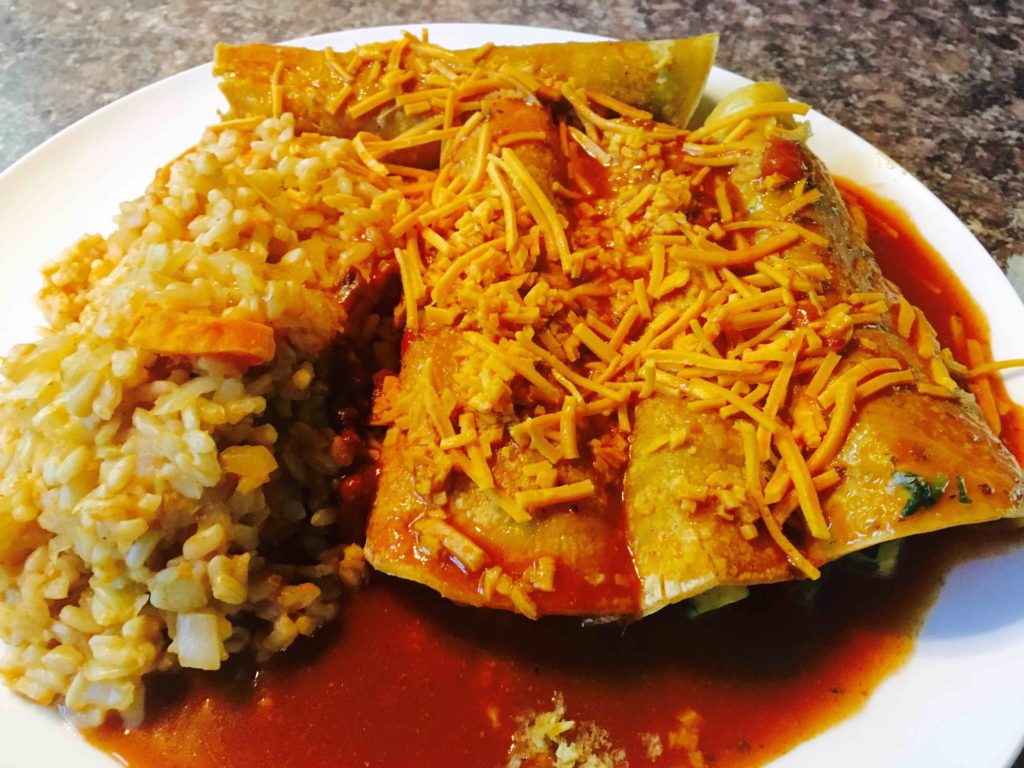
Dinner

- Lots of fruit
- A smoothie bowl topped with shredded coconut, fresh fruit, nuts and honey
- Cereal
- A healthy, vegan gluten-free power bar
- Sweet potatoes with coconut milk and maple syrup
- Gluten-free English muffins with almond butter, honey and sliced bananas or for a savory style: sliced avocado, sliced tomatoes, sliced onions, salt
Explanation
Pre-Breakfast
The purpose of the pre-breakfast routine is for digestion health. Aloe is healing to the lining of the small intestine, and warm lemon water is an excellent way to get your digestion started. Good gut health is a key factor in healing from autoimmunity, so I’m always doing something to try to keep it in good shape.
Breakfast
Were you wondering, how does a busy person eat gourmet food like oven-baked roasted potatoes, pizza, enchiladas and pot pie during the week? It’s all about planning, batching and using technology.
Planning is one of the keys to eating foods that taste good, your excited about and that also heals. We really like hot cereals in the morning. The various hot cereals we make include gluten-free oats, rice, millet, sorghum, buckwheat, amaranth, teff, and quinoa. Oats, rice, sorghum, millet and teff are considered grains and buckwheat, quinoa, and amaranth and are more so seeds so we deal with them differently (technically you could call all of them seeds because they are all able to sprout new plants, but those that are more so classified seeds are not from the grass family and are more easily digested without long cooking times).
If you're confused because you thought all grains were bad see my post about it.
With all grains and seeds, the night before we’re going to eat them we soak them in warm water overnight. In the morning we drain and rinse them well. The reason for this is to get all of the anti-nutrients out of the grains and seeds such as lectins, saponins and phytates. These can damage the small intestine contributing to leaky gut which in turn causes many people to suffer from chronic fatigue.
If you struggle with fatigue download my new eBook. I’m offering it free.
These anti-nutrients also prevents up to 80% of the nutrition in seeds from being released. But soaking them gets rid of this protective outer coating on the seeds, releasing the nutrients in them for our consumption. After thoroughly rinsing them until the soapy water is gone (which is the anti-nutrients), we cook the seeds for 15 to 25 minutes on the stove or in the Instapot until they’re done. (The Instapot is essentially a digital pressure cooker which can also act like a rice cooker. It’s a great little machine which save us time in the morning and makes life easier.)
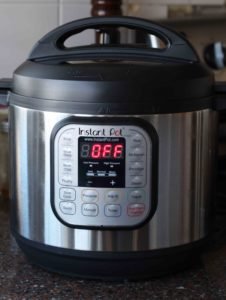
With grains such as oats, rice, sorghum, teff and millet, they digest better if they are cooked over a longer period of time. So for these grains, we soak them throughout the day and then in the evening, drain them, rinse them well and put them in the crockpot to cook overnight.
We cook the breakfast cereals with Himalayan pink mineral salt (1/2 teaspoon per dry cup of grain) and the needed amount of water (usually at the ratio of 1:3 dry grain to water).
For busy people, it’s also important to batch. This means instead of making enough for just one morning, we make enough for two or three. The benefit is that you will only have to prepare breakfast two to three times a week! Sound good, busy people?
Lunch
Typically, we plan all of our meals for the week on Sunday and spend part of that day cooking for the week. And when we prepare the meals, we make double or triple the recipe. You can put half of it in the fridge or freezer and pull it out in the morning as you are getting ready for work.
You’d be surprised how the three simple keys of planning, batching, and using technology can make a huge difference in time savings. Just investing 30 minutes to plan your meals will save you hours during the week. Just adding an additional cup of this and an extra teaspoon of that will save even more hours. Batching is key!
Dinner
Our evening meals are the easiest since we’re usually at home when we eat it and the foods we eat (fruit, smoothies, cereal, sweet potatoes, gluten-free English muffins) are foods that can be prepared on the spot within 15 minutes with the exception of the sweet potatoes.
You may have noticed that dinner wasn’t a substantial meal. This is because the key with dinner is to eat foods that will digest fast and eating them at a time that will give your stomach enough time to digest before you sleep.
If you are a sedentary person who works a desk job and doesn’t workout, then two meals a day is much better for your digestion and overall longevity. If you’re very active like my wife and I are, running, weight lifting and hiking regularly, your body will take three meals fine. Something most people are unaware of is that it’s harmful for your stomach to be digesting food while you’re trying to sleep. Digestion slows down and the food in the stomach ferments and rots creating bad blood which isn’t good for anyone but especially someone trying to reverse an autoimmune condition. You’ve probably experienced what it’s like to eat a big meal and then try to fall asleep for the night. You wake up the next morning feeling tired and unrested. Sometimes it’s accompanied by bad dreams. We’ve had this experience many times.
So the key with dinner is to eat foods that will digest fast and eating them at a time that will give your stomach enough time to digest before you sleep. With the foods I mentioned (smoothie, cereal, fruit, English muffins, etc.), 2-3 hours is plenty.
What if I’m a bad planner?
You can still pull it off if you’re a bad planner, but your options will be more limited. This happens to us once and a while. An emergency pops up and took up the time when you would normally have been preparing your food for the next few days. It happens. Here’s what our meals look like on days that we were unable to prepare and plan in advance for.
Breakfast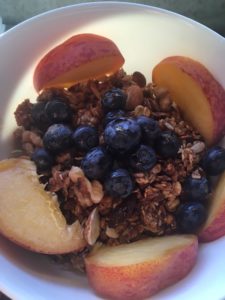
- Fruit - possibly 2-4 bananas and a few handfuls of berries
- Cold cereal (organic, non-GMO) with almond milk, some nuts and fruit on top
- Gluten-free English muffins or toast
- Homemade granola (prepared ahead of time it can last weeks)
- Smoothie with fresh fruit, nuts, coconut shreds and granola on top
Lunch
Simple salad or if we’re really busy, carrot sticks and cucumber slices with salt.
Pasta: organic brown rice pasta with an easy sauce like marinara sauce and vegetables (Whole Foods has our favorite go-to red sauce without any black pepper, citric acid or added sugar - 365 brand, Organic Tomato Basil Pasta Sauce)
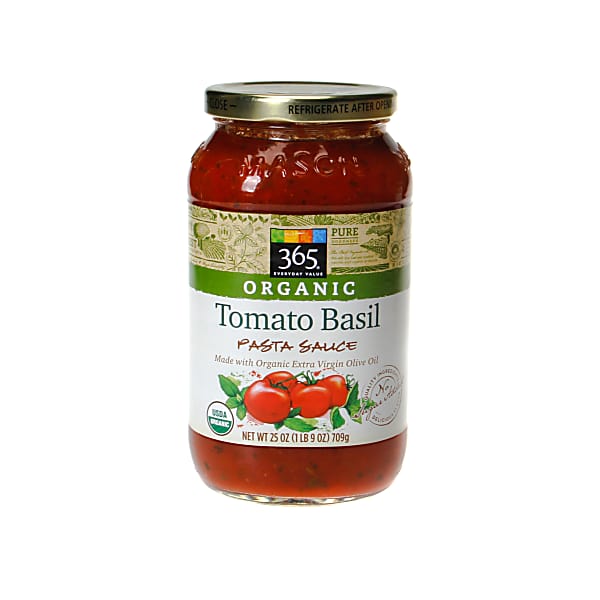
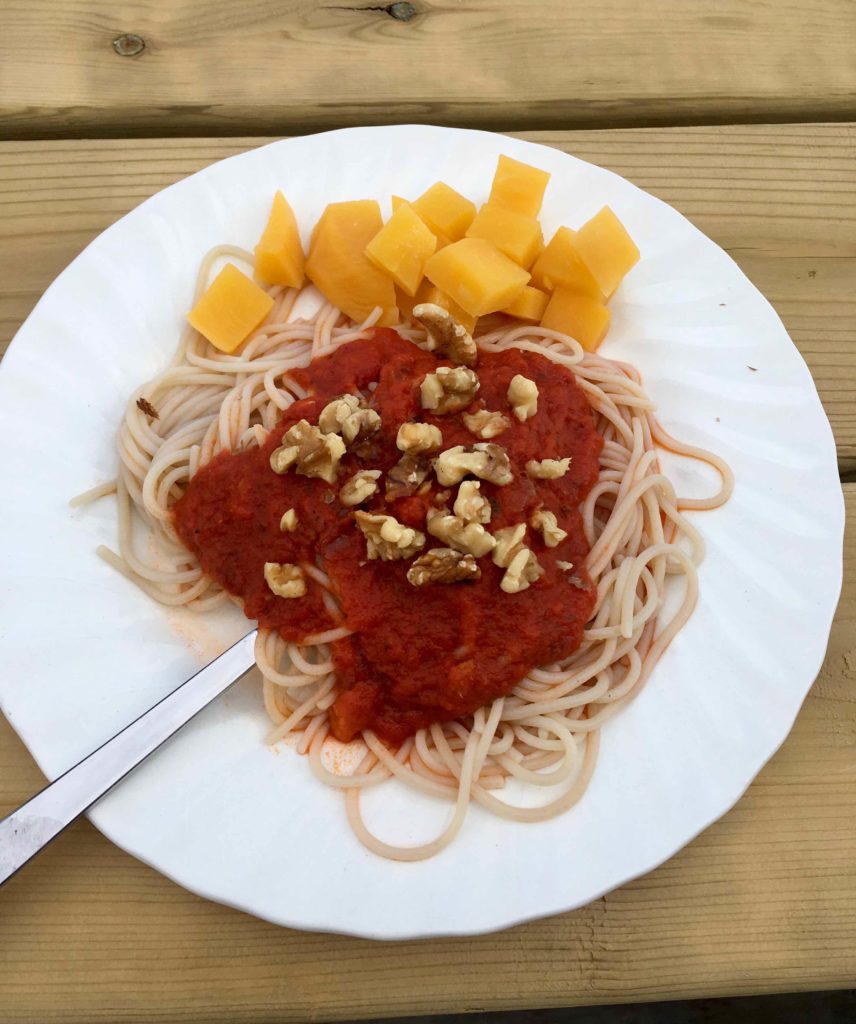
Gluten Free English muffins with marinara sauce, ground sesame seeds, olives, and onions to make little personal pizzas.
Dinner
(Pretty much the same since these are quick foods anyways.)
- Smoothie
- Cereal
- Sweet potatoes with coconut milk and maple syrup
- Lots of fresh fruit
- Gluten-free English muffins with almond butter, honey with sliced bananas
If you are a bad planner and tend to do things on the spot, you can do things fast like the rice pasta. However, if you plan you can enjoy gourmet homecooked food on days you had virtually no time to prepare it.
Eating the right foods is half the battle, but there’s also avoiding eating the wrong foods. Did you know that three of the biggest toxins causing autoimmune diseases are probably right in your kitchen? Take a look to see the top three autoimmune causing toxins.
There are numerous toxins that are causing autoimmune diseases, but here are the top 3.
